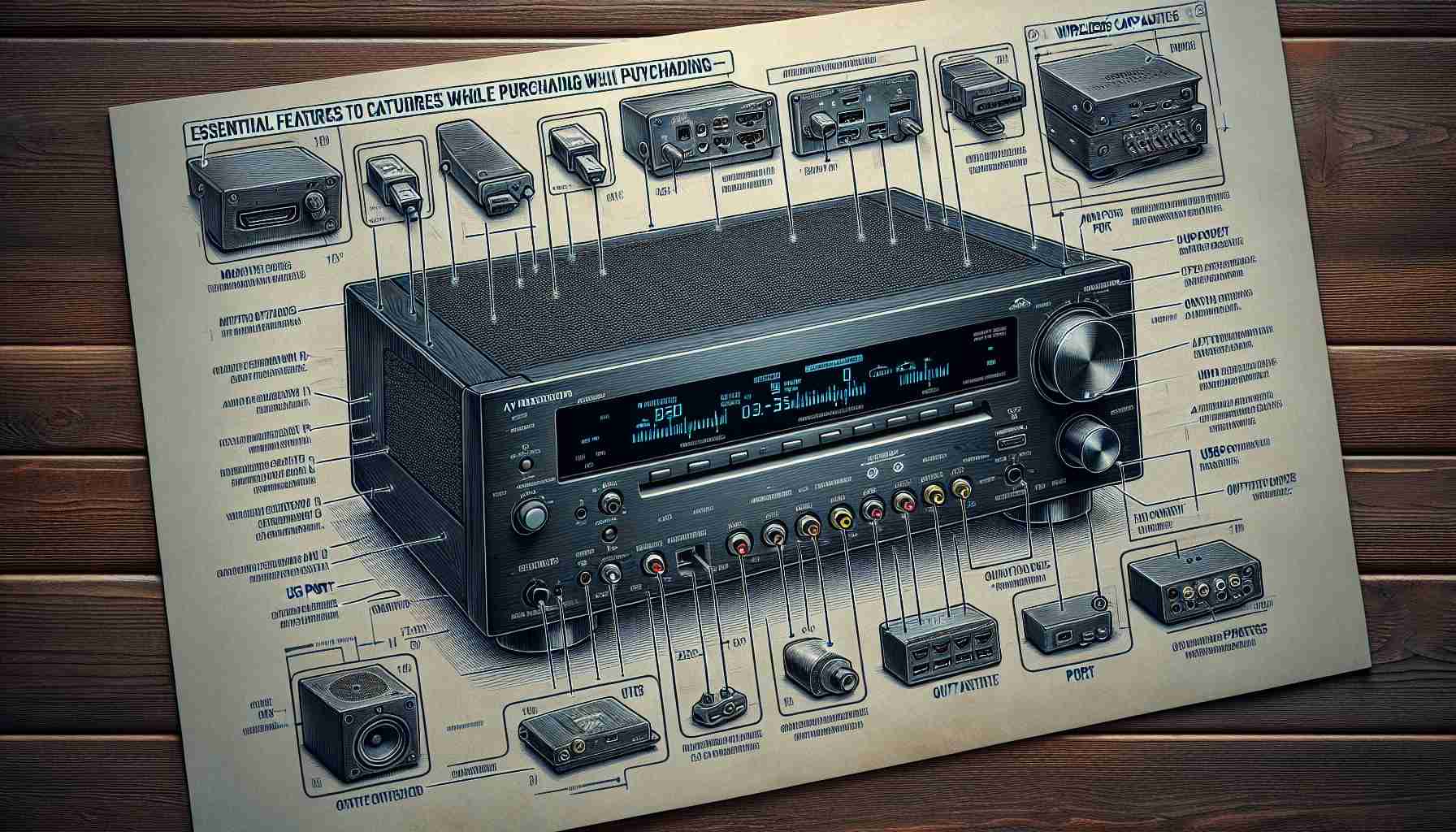AV receivers can be overwhelming due to their myriad features and complex specifications. When embarking on the quest for a new model, it’s crucial to pinpoint the aspects that truly enhance your experience.
One critical element to consider is the number of HDMI inputs. As most modern devices utilize HDMI, having a receiver with ample rear-mounted HDMI ports is essential. These connections are necessary for linking multiple devices, such as gaming consoles and streaming devices. For instance, models like the Onkyo TX-NR6100 and Denon AVR-S970H boast six HDMI inputs, while the Yamaha RX-V6A slightly surpasses this with seven. Additionally, they offer dual outputs for connecting multiple displays like a TV and a projector.
Another significant feature is Dolby Atmos capability. Many receivers priced over $500 are equipped with this technology, which can enrich your viewing experience. However, the impact may sometimes be minor unless additional height speakers are used. Alternatively, positioning your surround speakers at a higher level can still create an immersive sound environment.
Lastly, Wi-Fi music streaming functionality is a vital addition. Midrange receivers typically support various wireless streaming services, allowing seamless music integration. The most widely accepted options include Spotify Connect, Apple AirPlay, and Google Chromecast. Brands like Onkyo and Sony excel by supporting all three, while others offer unique alternatives that may better suit your needs.
Essential Features to Consider Before Purchasing an AV Receiver
Choosing the right AV receiver can significantly enhance your home entertainment experience. With a multitude of features and specifications to evaluate, it’s important to have a clear understanding of what matters most. Below are key aspects to consider, as well as common challenges, advantages, and disadvantages associated with AV receivers.
What are the essential audio formats to look for?
When selecting an AV receiver, it is important to check for support of various audio formats. The most common formats include Dolby TrueHD, DTS-HD Master Audio, and the more recent object-based audio format, Dolby Atmos. These formats ensure a superior audio experience, especially for movies and gaming.
What are the video capabilities of the AV receiver?
Look for AV receivers that support 4K video pass-through, HDR (High Dynamic Range), and 120Hz refresh rates, especially if you plan to use the receiver with ultra-high-definition displays or next-generation gaming consoles. Many modern receivers also support HDMI 2.1, which offers enhanced features for gaming and video performance.
How much power do you need?
The power output of an AV receiver, measured in watts per channel, can greatly affect audio performance, particularly in larger rooms. While it’s tempting to choose the receiver with the highest wattage, it’s crucial to match the receiver’s power output with your speakers’ capabilities for optimal sound quality.
Key Challenges in Selecting an AV Receiver
One of the main challenges buyers face is understanding the specifications and recognizing how they directly impact performance. Moreover, the rapid evolution of technology, such as updates in HDMI standards and streaming capabilities, can quickly render some models outdated. Ensuring compatibility with future technology is also a common concern.
Advantages and Disadvantages
Advantages:
– Comprehensive Audio Experience: High-quality AV receivers deliver immersive audio through advanced surround sound formats, greatly enhancing movie viewing and gaming.
– Connectivity Options: A wide range of inputs allows multiple devices to be connected easily, facilitating a versatile entertainment system.
– Multizone Functionality: Many receivers come equipped with the ability to set up different audio zones, enabling music to be played in multiple rooms simultaneously.
Disadvantages:
– Complexity: The extensive features and options can be overwhelming for users who may not want or need advanced functionalities.
– Price: High-end models can be quite expensive, and the cost can climb further if additional speakers are required for surround sound setups.
– Size and Heat Generation: Some AV receivers can be large and generate a considerable amount of heat, necessitating careful placement and adequate ventilation to avoid overheating.
Conclusion
Investing in an AV receiver requires careful consideration of your specific needs and future-proofing for evolving technology. By addressing the crucial questions listed above and understanding the inherent advantages and challenges, you can make an informed decision that enhances your home entertainment experience.
For more information on audio and home theater equipment, visit Audioholics or explore Crutchfield for an extensive selection of AV receivers and accessories.













